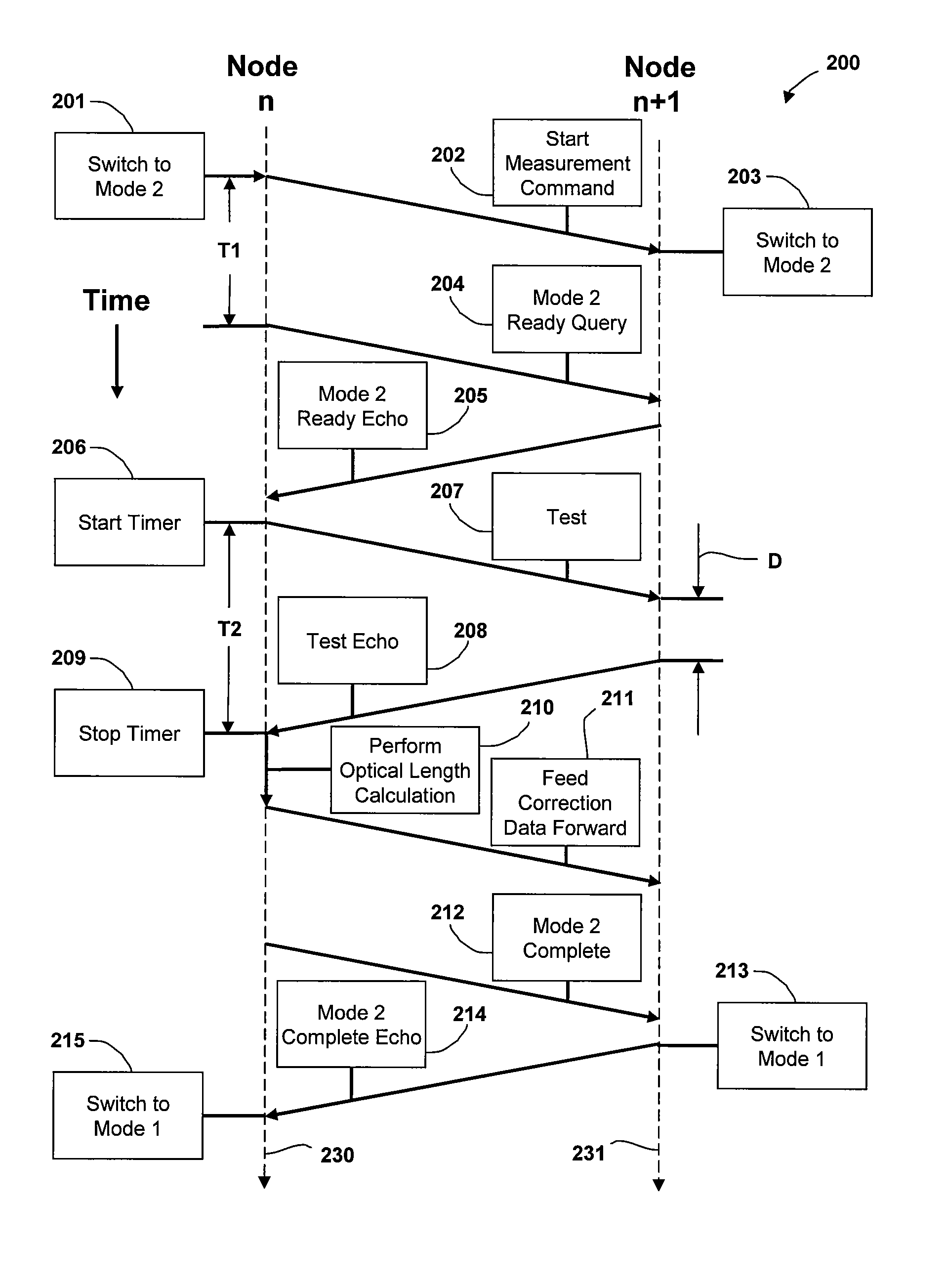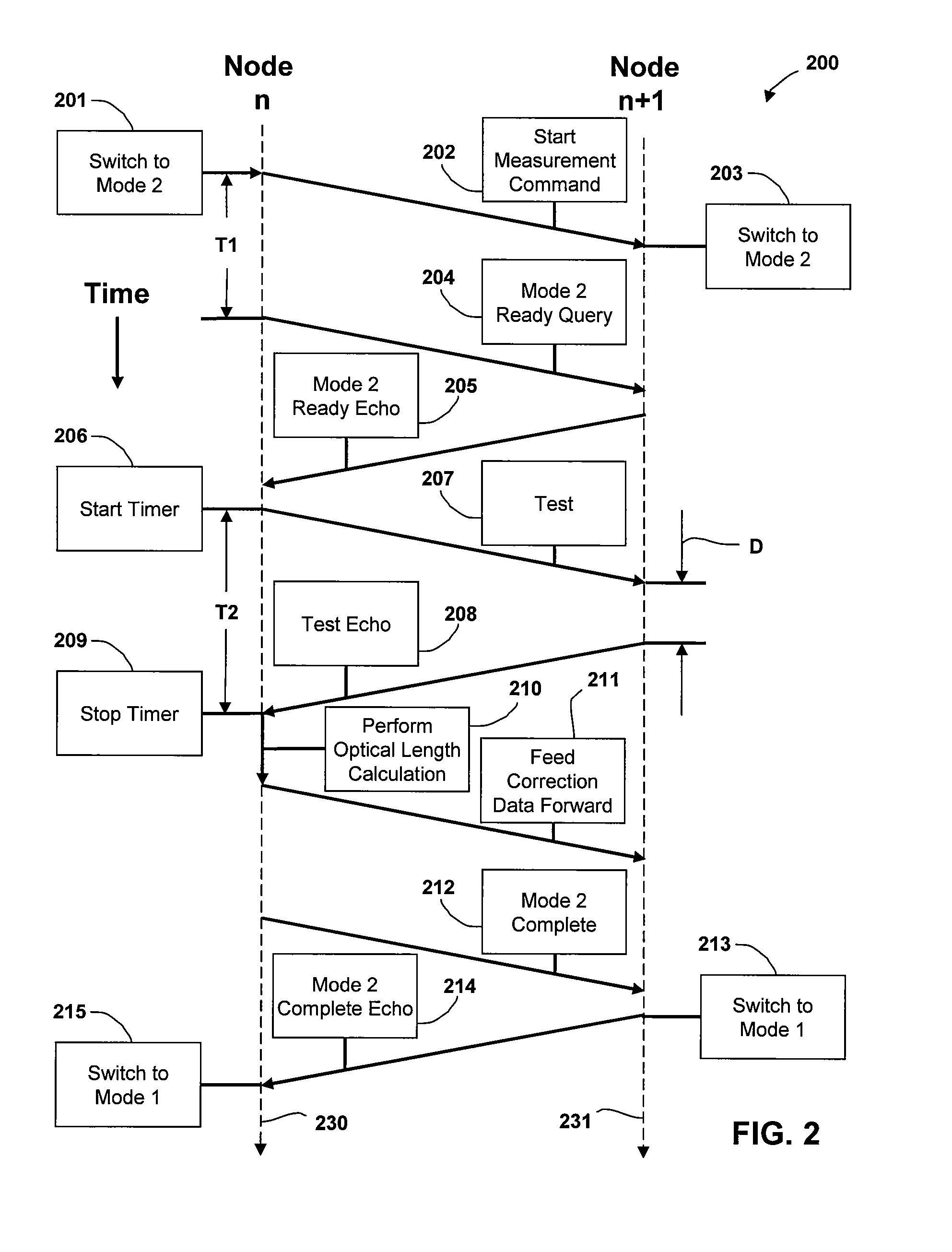Method of Determining An Optical Distance For Chromatic Dispersion Compensation
- Summary
- Abstract
- Description
- Claims
- Application Information
AI Technical Summary
Benefits of technology
Problems solved by technology
Method used
Image
Examples
Embodiment Construction
[0018]Embodiments of the invention contemplate a method of determining optical distance in an optical link using existing optical supervisor channel (OSC) transceivers and associated hardware. An OSC signal transmitted between adjacent nodes of an optical network determines the “time of flight” of an optical signal having a known wavelength, thereby allowing direct calculation of the optical distance between the two nodes. In this way, tunable dispersion compensation of a wavelength channel can be periodically optimized at each node in response to incremental changes in environmental factors that affect chromatic dispersion produced between the two nodes or in response to network reconfigurations that affect the chromatic dispersion produced between the two nodes.
[0019]FIG. 1 illustrates a portion of an optical network 100 that includes two nodes. Nodes 101, 102 are adjacent nodes in optical network 100, e.g., nodes n, n+1, respectively. In addition to other components related to th...
PUM
 Login to View More
Login to View More Abstract
Description
Claims
Application Information
 Login to View More
Login to View More - R&D
- Intellectual Property
- Life Sciences
- Materials
- Tech Scout
- Unparalleled Data Quality
- Higher Quality Content
- 60% Fewer Hallucinations
Browse by: Latest US Patents, China's latest patents, Technical Efficacy Thesaurus, Application Domain, Technology Topic, Popular Technical Reports.
© 2025 PatSnap. All rights reserved.Legal|Privacy policy|Modern Slavery Act Transparency Statement|Sitemap|About US| Contact US: help@patsnap.com



